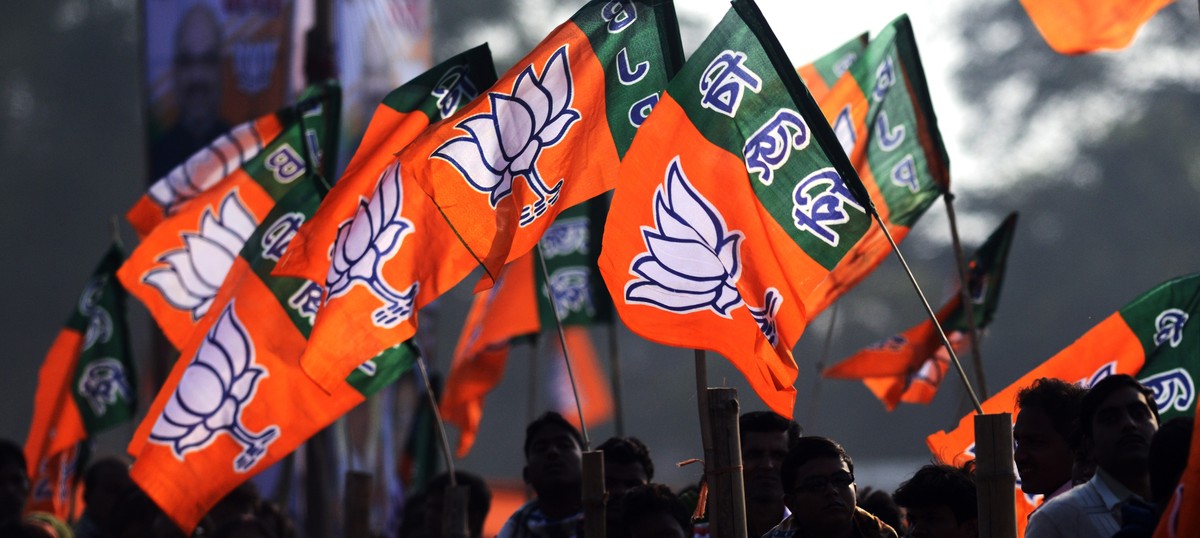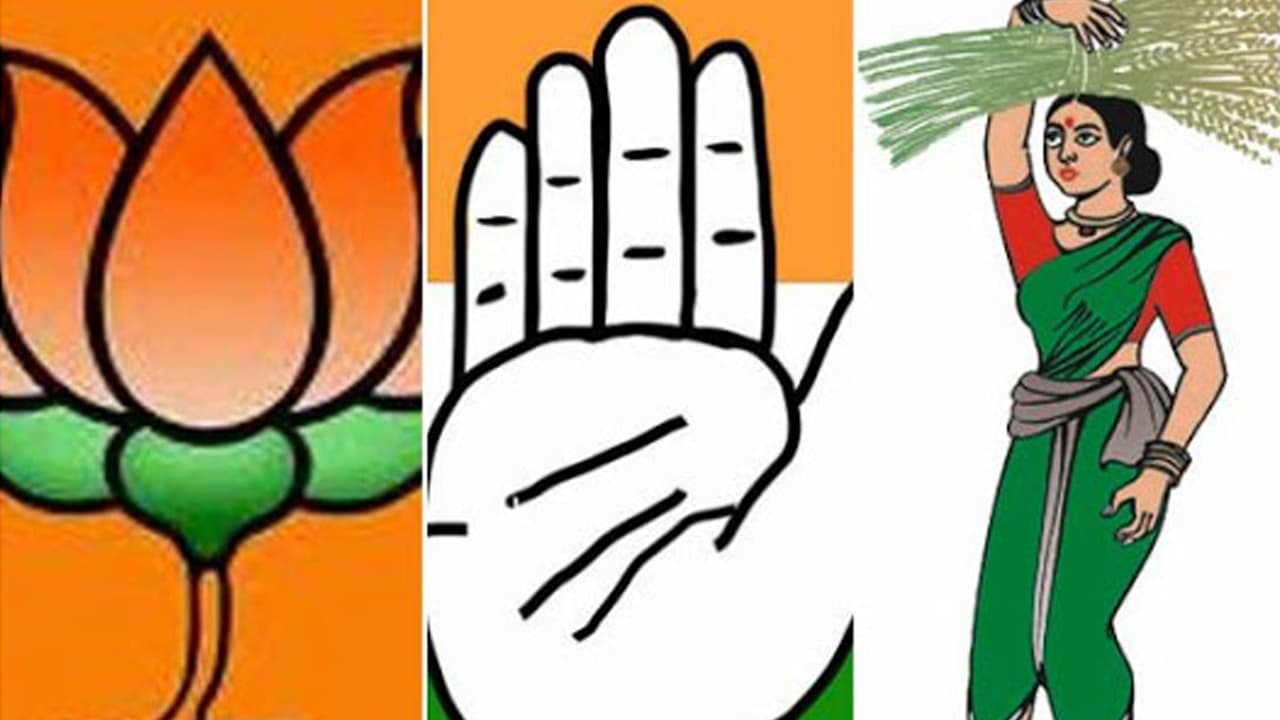Karnataka Assembly Election 2018: The stakes are high for both the BJP in its current expansionist drive, and the Congress that is struggling for its very existence.
On 1st November 1956, the then President of India Dr Rajendra Prasad stood in attendance at the Central College Grounds in Bengaluru, even as noted Kannada singer and composer P KalingaRao sang his mellifluous Udayavaagali Namma Cheluva Kannada Naadu (May our beloved Karnataka arise).

The then Chief Minister S Nijalingappa, his predecessors Kadidal Manjappa and Kengal Hanumanthaiah, and the Governor Jayachamaraja Wodeyar were present on the occasion. Unlike several other Indian states that were carved out of larger princely provinces or Presidencies, modern Karnataka was formed as an amalgam of disparate parts, which had separated from each other way back in 1799 with the fall of Tipu Sultan and the British takeover.
On that day, Kannadigas from erstwhile Bombay and Madras Presidencies of the British, the Nizam’s Hyderabad, princely state of Kodagu and the coastal Karavali merged with the Old Mysuru State of the Wodeyars. This merger was accepted grudgingly by many in the Old Mysuru region that was more developed under its benevolent and progressive monarchy and hence did not like the idea of sharing their wealth with the lesser-developed neighbours. The binding factor though was the language of Kannada and the nostalgia it evoked in the hearts of its speakers scattered across different political regimes.

The unification and the spirit of Kannada (or Kannadatana) meant different things for different people. For AluruVenkataRao who pioneered the concept of unification, the concept was of “Karnatakatva”- a larger geographical identity meshed with cultural and linguistic bonds; for poet Kuvempu this was more of a literary map; for the leading light of Kannada renaissance B.M. Shrikanthaiah (or BM Shri as he is popularly known as) the Kannada identity was always present, albeit latent, and was awakened during this time.
Almost six decades later and having marched many strides together, these competing tensions, regional imbalances and disparities continue to dominate and influence the political landscape of the jigsaw puzzle that was put together to weld modern Karnataka.
Geographical unity might have been achieved, but has emotional integration really happened in these 60 years? Is this what gives the scope for creating the pan-State Kannada identity and sub-nationalism that the current Congress government and Chief Minister Siddaramaiah are striving strategically to achieve and reap poll dividends through it as well?
With 30 districts and 4 administrative divisions (Bengaluru, Mysuru, Belagavi and Kalburgi), the State has 6 very distinctive regions. Their unique history, culture, linguistics and caste compositions influence their political choices. Hence any poll analysis of the State can seldom be done without breaking down the whole into these six distinct parts. Given the diversity, the Karnataka Tourism Department’s tagline “One State, Many Worlds” is perhaps most germane for the political landscape here!

Coastal Region (Karaavali)- 19/224 seats: comprise the districts of Uttara Kannada, Udupi and Dakshina Kannada.
Karaavali has always been a BJP stronghold and the region where the Hindutva ideology has had a strong resonance. The 2013 Assembly Polls was an exception where the divided house that the BJP was, with breakaway factions of BS Yeddyurappa and Sriramulu, handed the region on a platter to the Congress, with it wresting 14 seats. This time around, a united BJP campaign and the shrill rhetoric of leaders such as Ananth Kumar Hegde, Shobha Karandlaje and Uttar Pradesh Chief Minister Yogi Adityanath is expected to win back the traditional support base of the party in this communally sensitive region. The spate of political violence and killings of BJP and RSS workers witnessed here and the inaction of the Government has further bolstered the narrative of the BJP about Siddharamaiah’s anti-Hindu, pro-appeasement image. This region, along with Kodagu, was also where maximum public protests were seen to the pet project of the Chief Minister- Tipu Jayanti.
Old Mysuru Region – 61/224 seats: comprise the districts of Mysuru, Kodagu, Mandya, Hassan, Chamarajanagara, Tumakuru, Chikkaballapura, Kolar and Bengaluru Rural)
The heart of the erstwhile princely state of Mysore has traditionally been the battle turf between the Congress and the JD (S). The BJP has had a wavering fortune here and in 2013 won merely 4 seats, while the Congress romped home with 27 and the JD(S) came a close second with 25. The region also sees a strong polarization between the two caste vote-banks of the Congress and JD (S) respectively- the AHINDA (Kannada acronym for dalits, minorities and backward castes) and the Vokkaligas. With a Vokkaliga icon like former CM, SM Krishna hopping on to their bandwagon, the BJP hopes to make a dent in the JD (S) pie. Though the party’s strategy here seems unclear, with Krishna sulking all the while on being marginalized and his supporters having failed to get tickets. This region would also see Siddaramaiah battle it out in the Chamundeshwari constituency.
Bengaluru Urban – 28/224 seats: The political significance of Bengaluru is not merely as the state’s capital but also as the financial lever, being the IT-BT and start-up hub of the country. Voters here are largely influenced by civic issues and developmental work. Bengaluru is credited as one of the most engaged cities of India when it comes to citizen awareness and participation in governance issues. Several citizen groups such as Namma Bengaluru Foundation, B.Pac, Janaagraha and RWAs have been at the forefront of making the citizen’s voices heard. This engagement does not however reflect in the abysmal voting percentages that the city records. The city has usually been a BJP bastion with the educated middle classes by and large supporting them. In 2013, the Congress marginally raced ahead with 13 seats. The BJP at its nadir with its severe anti-incumbency, corruption scandals and three Chief Ministers in 5 years, still managed a respectable 12 seats. This time around the Congress faces a strong anti-incumbency with public ire about the pathetic condition of roads and lakes, traffic mismanagement, flooding during rains and public safety likely to be issues with voters here. The Congress seeks to offset this with its measures for urban poor and minorities in the form of its numerous Bhagya schemes, the Indira Canteen and so on, as also the strong Kannada identity and anti-Hindi sentiment that it fanned and hopes to encash upon.

Mumbai-Karnataka -50/224 seats; comprise the districts of Belagavi, Bagalkote, Hubballi-Dharwad, Vijayapura, Gadag and Haveri)
The Mumbai-Karnataka region assumes additional significance in these elections as it is dominated by the Lingayat community. It will hold the key to the question of whether Siddaramaiah’s calculated move to accord minority status to the community has paid the Congress its desired dividends. The region has usually been a BJP stronghold, though in 2013 with the division in the BJP ranks, the Congress managed to win 31 seats here. It hopes that its strategy on the religious status would yield similar results this time by dividing the BJP vote-share. The JD (S) has marginal presence here. The sensitive Mahadayi river water sharing issue too dominates this region as most districts depend on the river for drinking and irrigation needs. The BJP floundering in its response to the issue will also be tested in the outcome here.
Hyderabad Karnataka – 40/224 seats; comprise the districts of Bidar, Yadgir, Raichuru, Koppala, Kalburgi and Ballary)
Undeniably the most under-developed part of the State and plagued by illegal mining, the Hyderabad-Karnataka is dominated by SC, ST and Muslim voters with a sizeable Lingayat vote-share. The competing tensions with Southern Karnataka, especially the political hub of Bengaluru, has been a constant peeve here. With strong leaders such as Mallikarjuna Kharge coming from here, the Congress had posted a significant victory of 23 seats in the HK region. Siddaramaiah’s decision to choose a second and safer turf of Badami is driven by the same comfort factor. The region has been a traditional Congress stronghold and it returned Sonia Gandhi too in her 1999 parliamentary fight against Sushma Swaraj in Ballary. In the 2008 Assembly polls, the BJP snatched the region from the Congress riding on the backs of the Reddy brothers. With the discredited Reddy brothers making a comeback (which even Yeddyurappa acknowledged as adding an elephant’s strength to the party prospects, even as its anti-corruption image might take a huge dent), the region seems to be up for grabs for either party.
Central Karnataka – 26/224; comprise the districts of Chitradurga, Chikkamagalur, Shivamogga and Davanagere)
With Shivamogga as Yeddyurappa’s home bastion, Central Karnataka has usually gone with the BJP. In the 2008 polls both the Congress and BJP won 13 seats each here. However it was a rout for the divided BJP in 2013, securing merely 3 against 15 of the Congress and 6 seats of the JD (S). The Lingayat community is strong in Davanagere and would again bear litmus to the minority tag issue. In Chitradurga the numerous religious mutts play an important role and hence the beeline of leaders from Amit Shah and Rahul Gandhi to state leaders, “seeking blessings” from the heads of the mutts.

In this fascinating mélange of many worlds, in subsequent articles, I will zoom-in into each of these distinct regions to analyze the issues, tensions, and the prospects of the various players. Will a politically aware State that has seldom returned an incumbent break the jinx and hand it back to Siddaramaiah or will Yeddyurappa make up for his disastrous first term and wrest back power? Will the JD (S), as always, play the spoil-sport and kingmaker? The battle for Karnataka sets the stage for the final 2019 Parliamentary elections as a ‘quarter-final’, before the ‘semi-final’ polls in Rajasthan, Madhya Pradesh and Chattisgarh. The stakes are high for both the BJP in its current expansionist drive, and the Congress that is struggling for its very existence.
(Author Dr. Vikram Sampath is a Bangalore based award-winning author/historian and political commentator).
